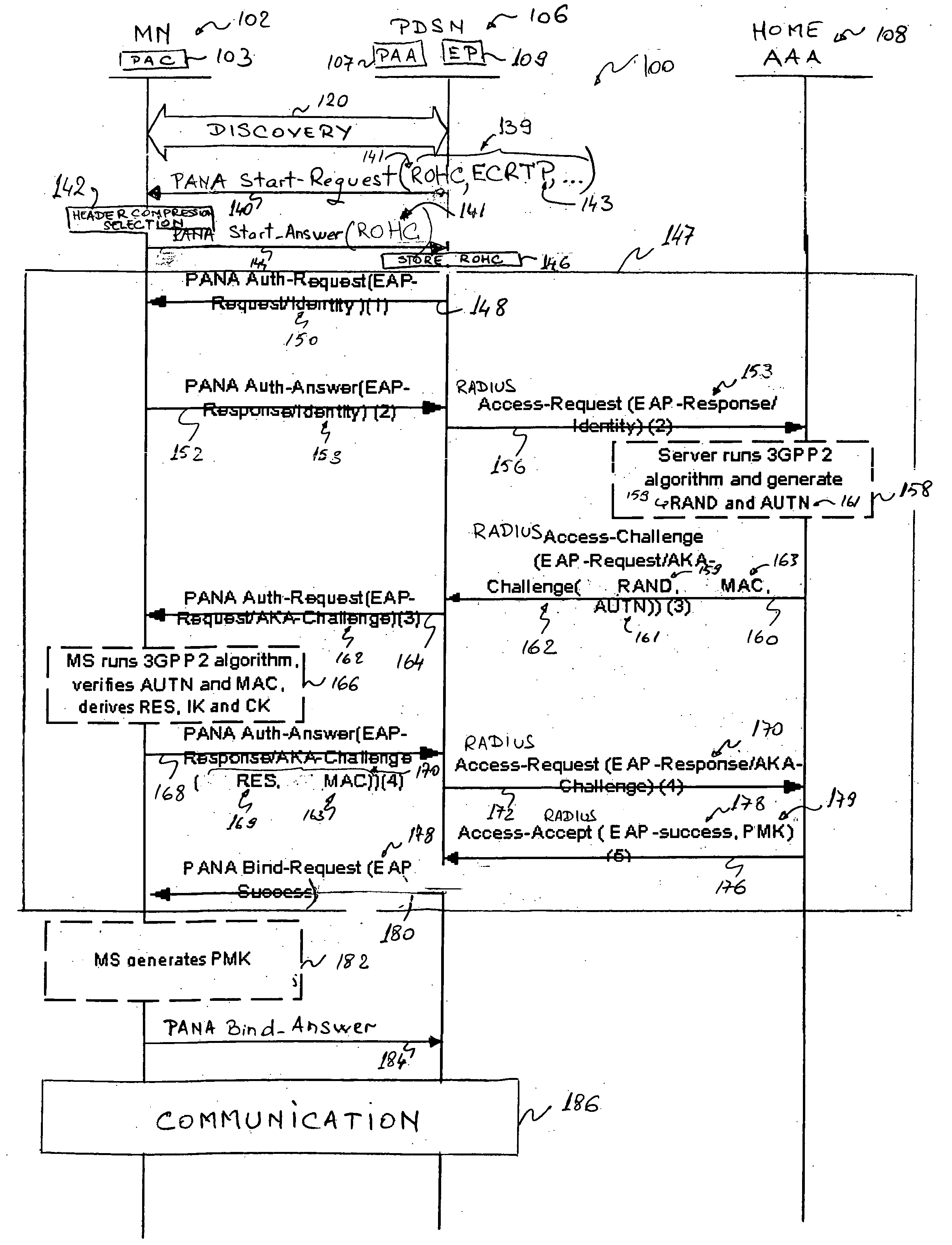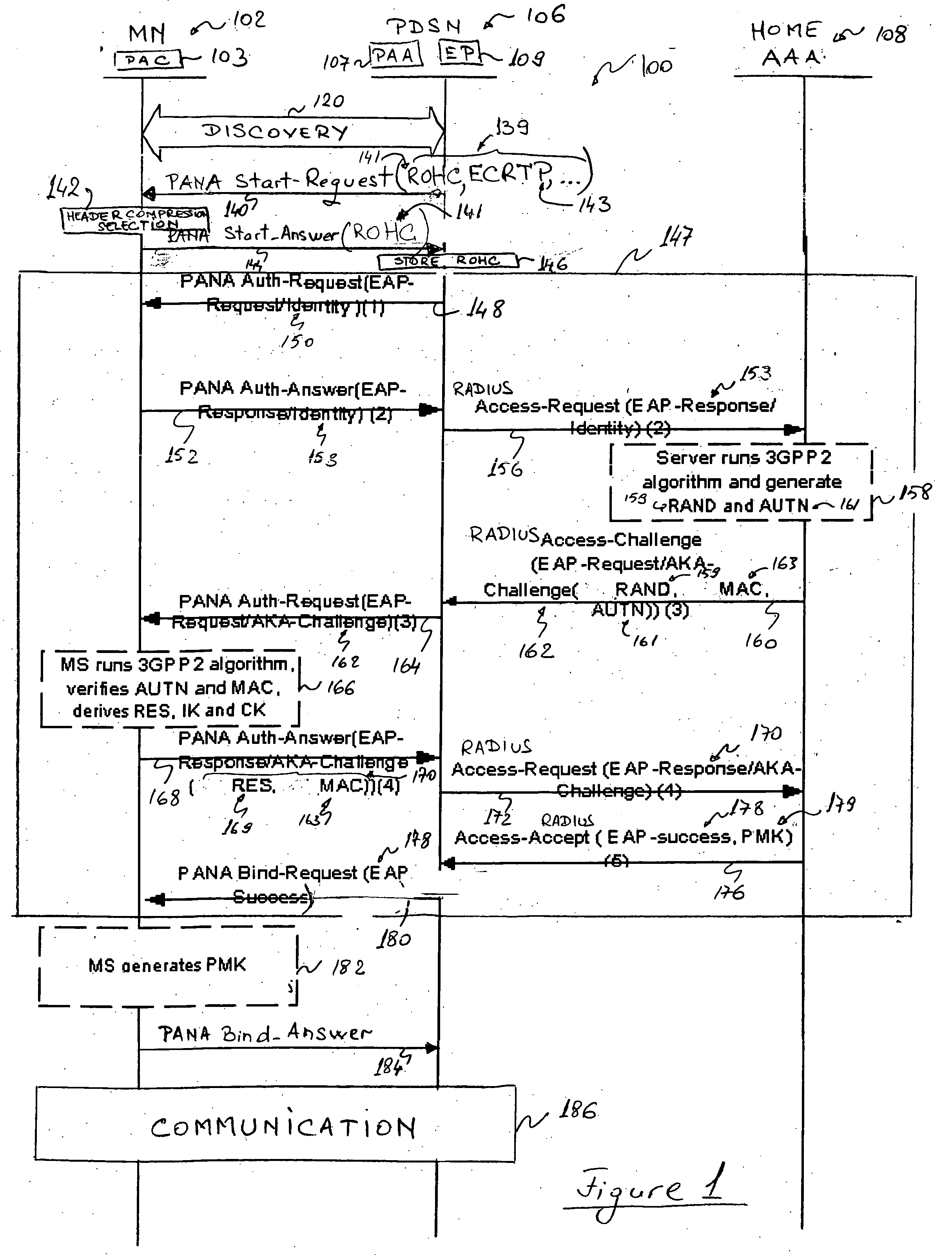Header compression negotiation in a telecommunications network using the protocol for carrying authentication for network access (PANA)
a telecommunications network and network access technology, applied in the direction of wireless network protocols, electrical equipment, selection arrangements, etc., can solve the problems of no other existing ietf-based protocol that provides all the capabilities of ppp, high call setup delays, and non-standard ad-ho
- Summary
- Abstract
- Description
- Claims
- Application Information
AI Technical Summary
Benefits of technology
Problems solved by technology
Method used
Image
Examples
Embodiment Construction
[0043] The innovative teachings of the present invention will be described with particular reference to various exemplary embodiments. However, it should be understood that this class of embodiments provides only a few examples of the many advantageous uses of the innovative teachings of the invention. In general, statements made in the specification of the present application do not necessarily limit any of the various claimed aspects of the present invention. Moreover, some statements may apply to some inventive features but not to others.
[0044] In order to alleviate the use of Point-to-Point Protocol (PPP) in Code Division Multiple Access 2000 (CDMA2000) networks, the present invention proposes to replace PPP by an IP based protocol for packet data access and Mobile Node (MN) configuration. More precisely, the invention relies on using the Protocol for Carrying. Authentication for Network Access (PANA), with added enhancements and functionalities, in order to allow an effective ...
PUM
 Login to View More
Login to View More Abstract
Description
Claims
Application Information
 Login to View More
Login to View More - R&D
- Intellectual Property
- Life Sciences
- Materials
- Tech Scout
- Unparalleled Data Quality
- Higher Quality Content
- 60% Fewer Hallucinations
Browse by: Latest US Patents, China's latest patents, Technical Efficacy Thesaurus, Application Domain, Technology Topic, Popular Technical Reports.
© 2025 PatSnap. All rights reserved.Legal|Privacy policy|Modern Slavery Act Transparency Statement|Sitemap|About US| Contact US: help@patsnap.com


